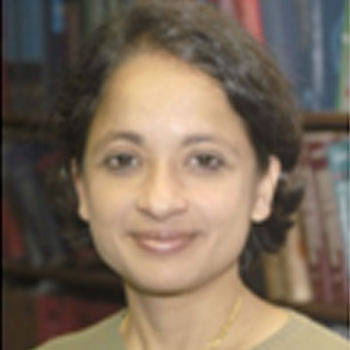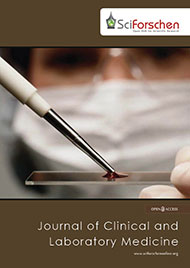
Associate Professor and Director
Department of Pathology, Microbiology and Immunology
Vanderbilt University Medical Center
USA
Education
| 2002-2003 | Fellowship | Washington University School of Medicine, St. Louis, Mo |
| 1998-2002 | Residency | Washington University, St. Louis, MO |
| 1998 | M.D | University of Texas Southwestern Medical School, Dallas, TX |
| 1996 | Ph.D | University of Texas Southwestern Medical School, Dallas, TX (MSTP) |
| 1990 | B.S., in Biochemistry | Rice University, Houston, TX |
Biography
Pampee P. Young is an Associate Professor in the Department of Pathology, Microbiology and Immunology at Vanderbilt University Medical Center. She serves as the Medical Director of Transfusion Medicine and Stem Cell Laboratory. She completed her undergraduate at Rice University in Houston, Tx and obtained her M.D/Ph.D. degrees at UT Southwestern in Dallas, Tx. She completed residency and fellowship training at Washington University Medical School in St. Louis. There she began her studies in adult stem cell biology. Her basic science research program in regenerative medicine addresses the role of stem cells and our endogenous repair mechanisms to drive wound healing. An important long term goal of the laboratory is to translate our findings to help wounded military serviceman. Our work is funded by the Veterans Affairs, pharmaceuticals and NIH.
Research Interest
- Endothelial Progenitor Cells (EPCs)
- Angiogenesis
- Mesenchymal stem cells (MSCs)
- Vasculogenesis
- cellular adaptation to biomechanical stress
- tumor-host interaction
- regeneneration
- cardiac regeneration
- Wound Healing
Professional Activities:
| 2003-2010 | Assistant Professor Medical Director |
Department of Pathology and Medicine | Vanderbilt University Medical Center Nashville, TN |
| 2005-Present | Medical Director | Transfusion Medicine | Vanderbilt University Medical Center and Middle Tennessee Valley Veterans Affairs Medical Center Nashville, TN |
| 2010-Present | Associate Professor | Department of Pathology, Microbiology and Immunology | Vanderbilt University Medical Center |
| Hospital Appointments | |
| 2003-Present | Vanderbilt University Medical Center Nashville, TN |
| 2004-Present | Department of Veteran Affairs Nashville, TN |
Publications
- Young PP, Mendelson CR. A CRE-like element plays an essential role in camp regulation of human SP-A2 gene in alveolar type II cells. Am J Physiol 1996; 271:L287-99. PMID: 8770068
- Young PP, Mendelson CR. A GT box element is essential for basal and cyclic AMP regulation of the human SP-A2 gene in alveolar type II cells; evidence for binding of lung nuclear factors distinct from Sp1. Mol Endocrinol 1997; 11:1082-1093 PMID: 9212056
- Mendelson CR, Gao E, Young PP, Michael LF, Alcorn JL. Transcriptional regulation of the surfactant protein A (SP-A) gene in fetal lung (review). Chest 1997; 11:96S-106S. PMID: 9212056
- Mendelson CR, Gao E, Li J, Young PP, Michael, LF, Alcorn, JL. Regulation of expression of surfactant protein-A. Biochimica et Biophysica Acta. 1998; 1408(2-3):132-49 PMID: 9813283
- Mendelson CR, Michael LF, Young PP, Li JX, Alcorn JL. Cyclic adenosine monophosphate and glucocorticoid regulation of surfactant protein A gene expression. Endocrinology of the lung: Development and surfactant synthesis, 2000; 59-80.
- Young PP, Hofling A and Sands MS. VEGF increases engraftment of bone marrow-derived endothelial progenitor cells (EPCs) into vasculature of newborn murine recipients. Proc. Natl. Acad. Sci. USA, 2002; 99: 11951-11956; Track 2. PMID: 12195016
- Young PP, Vogler C, Hofling AA and Sands MS. Biodistribution and efficacy of donor lymphocytes in a murine model of lysosomal storage disease. Molecular Therapy, 2003; 7:52-61. PMID: 12573618
- Alcorn JL, Islam K, Young PP, Mendelson CR. Glucocorticoid inhibition of SP-A gene expression in lung type II cells is mediated via the TTF-1 binding element. Am. J. Physiol., 2004;286:L767-76. PMID: 14633512
- Young PP, Fantz CR and Sands MS. VEGF opens up the blood brain barrier and promotes survival in nonablative BMT of newborn Twitcher mice. Exp. Neurol.,2004; 188:104-114. (*Corresponding author) PMID: 15191807
- Teleron AA, Carlson B and Young PP. Blood donor WBC reduction filters as a source of human peripheral blood-derived endothelial progenitor cells (EPCs). Transfusion, 2005, 45:21-25 PMID: 15647014
- Young PP, Modur V, Teleron AA, Ladenson JH. Enrichment of genes in the aortic intima which are associated with stratified epithelium: implications of underlying biomechanical and barrier properties of the arterial intima. Circulation, 2005,111:2382-90 (*Corresponding author) PMID: 15867175
- Sharpe EE, Teleron AA, Li B, Price J, Sands MS, Alford K, Young PP. The origin and in vivo significance of murine and human culture expanded endothelial progenitor cells (CE-EPCs), Am J Pathol, 2006, 168:1710-21. PMID: 16651636
- Li B, Sharpe EE, Maupin A, Teleron AA, Pyle A, Carmeliet P, Young PP. VEGF and PlGF promote adult vasculogenesis by enhancing EPC recruitment and vessel formation at site of tumor neovascularization. FASEB J, 2006, 20:1495-1497. PMID: 16754748
- Young PP, Vaughan DE, Hatzopoulos AKH. Biological properties of endothelial progenitor cells (EPCs) and their potential for cell therapy. Progress in Cardiovascular Dis., 2007, 49:421-9. (*Corresponding author) PMID: 17498522
- Ryzhov S, Solenkova NV, Goldstein AE, Lamparter M, Fleenor T, Young PP, Greelish JP, Byrne JG, Vaughan DE, Biaggioni I, Hatzopoulos AK, Feoktistov I. Role of adenosine receptors in adhesion of endothelial progenitors to cardiac microvascular endothelial cells. Circulation Res.,2008, 102:356-63 PMID: 18032734
- Devin JK, Vaughan DE, Blevins LS, Chen Q, Covington J, Verity DK, and Young PP. Low-dose growth hormone administration mobilizes endothelial progenitor cells in healthy adults. Growth Hormone and IGF Res., 2008, 18:253-63. PMID: 18166495
- Devin JK and Young PP. The effects of growth hormone and insulin-like growth factor-1 on the aging cardiovascular system and its progenitor cells. Curr Opin Invest Drug, 2008, 9:983-92. PMID:18729005
- Pyle AL, Li B, Maupin AB, Guzman RJ, Crimmins DL, Olson S, Atkinson JB and Young PP Biomechanical stress induces novel arterial intima-enriched genes: implications for vascular adaptation to stress. Cardiovasc Pathol, 2008, epub. PMID: 19211270
- Pyle AL, Atkinson J, Pozzi A, Eckes B, Davidson JM, Crimmins DL, Reese J and Young PP. Regulation of atheroma-enriched protein, SPRR3, in vascular smooth muscle cells through cyclic strain is dependent on integrin a1b1/collagen interaction. Am J Pathol, 2008, 173:1577-88 PMCID: PMC2570146
- Alfaro MP, Pagni M, Vincent A, Atkinson J, Hill MF, Cates J, Davidson JM, Rottman J, Lee E, and Young PP. A Wnt modulator sFRP2 enhances mesenchymal stem cell engraftment, granulation tissue formation and myocardial repair. Proc. Natl. Acad. Sci. USA, 2008, 105:18366-71, Track 2. PMID: 19017790
- Li B, Vincent A, Cates J, Brantley-Sieders, D, Polk DB, Young PP. Low levels of tumor necrosis factor alpha increase tumor growth by inducing an endothelial phenotype of monocytes recruited to the tumor site. Cancer Research, 2009, 69:338-48. PMID: 19118019
- Barnes SL, Young PP, Miga MI. A novel model-gel-tissue assay analysis for comparing tumor elastic properties to collagen content. Biomechanics and Modeling in Mechanobiology, 2009, 8:337-43. PMID: 19308472
- Young PP, Ardestani S, Li B. Myeloid Cells in Cancer Progression: Unique Subtypes and Their Roles in Tumor Growth, Vascularity, and Host Immune Suppression. Cancer Microenvironment,2010, 4:1-11. PMID: 21505557
- Cates JM, Friedman DB, Seeley EH, Dupont WD, Schwartz HS, Holt GE, Caprioli RM, Young PP. Proteomic analysis of osteogenic sarcoma: association of tumor necrosis factor with poor prognosis. 2010 International J Exp Pathol, 91: 335–349. PMID: 20353421
- Pyle AL and Young PP. Atheromas feel the pressure: biomechanical stress and the progression of atherosclerosis. Am J Pathol, 2010, 177:4-9. PMID: 20558573
- Alfaro MP, Vincent A, Thorne CA, Hong C, Lee E, Young PP. sFRP2 suppression of bone morphogenic protein (BMP) and Wnt signaling mediates mesenchymal stem cell (MSC) self-renewal promoting engraftment and myocardial repair. Journal Biological Chemistry, 2010, 285: 35645-35653. PMID: 20826809
- Saraswati S, Alfaro MP, Thorne CA, Atkinson J, Lee E, and Young PP. Pyrvinium, a potent small molecule Wnt inhibitor, promotes wound repair and post-MI cardiac remodeling. PLoS One, 2011, 5(11): e15521. PMID: 21170416
- Li B, Pozzi A, and Young PP. TNFα accelerates tumor vascular leukocyte formation through the induction of integrin α5 expression and adhesion to fibronectin, Molecular Cancer Research, 2011;9(6):702-1 PMID: 21536688
- Hughey CC, Johnsen V, Ma L, Freyja J, Young PP, Wasserman DH, Rottman JN, Hittel DS, Shearer J. Mesenchymal stem cell transplantation for the infarcted heart: a role in minimizing abnormalities in cardiac-specific energy metabolism. Am J Physiol Endocrin and Metabol. 2012 Jan 15;302(2):E163-72. Epub 2011 Oct 4. PMID: 21971524
- Garcia C, Shaffer C, Alfaro MP, Smith A, Sun J, Zhao Z, Young PP, VanSaun M, Eid J. Reprogramming of mesenchymal stem cells by the synovial sarcoma-associated oncogene SYT-SSX2. Oncogene, 2012 May 3;31(18):2323-34. PMID: 21996728
- Saraswati S, Alfaro MP, Deskins DL, Lee E, Young PP. Pyrvinium, a potent small molecule Wnt inhibitor, increases engraftment and inhibits lineage commitment of mesenchymal stem cells. Wound Repair and Regeneration. 2012. PMID: 22332749
- Alfaro MP, Saraswati S, Young PP. Molecular mediators of mesenchymal stem cell biology. Vitam Horm. 2011; 87:39-59. PMID:22127236
- Alfaro MP, Young PP. Lessons from Genetically Altered Mesenchymal Stem Cells (MSCs); Candidates for Improved MSC-Directed Myocardial Repair. Cell Transplant. 2012, 21:1065-74. PMID: 22080676.
- Deskins DL, Ardestani S, Young PP. The Polyvinyl Alcohol Sponge Model Implantation. Journal of Visualized Experiments. 2012Apr 18; (62).pii:3885. PMID: 22546933
- Hughey CC, Alfaro MP, Belke D, Rottman JN,Young PP, Wasserman DH and Shearer J. Increasedoxygen consumption and OXPHOS potential in superhealer mesenchymal stem cells. Cell Regeneration, 2014 in press
- Saraswati S, Bastakoty D, Young PP. Molecular and signaling pathways that modulate mesenchymal stem cell self-renewal. Stem Cells and Cancer Stem Cells. 2012; 6: 131-41.
- Alfaro MP, Deskins DL, Wallus M, Dasgupta J, Davidson JM, Nanney LB, Guney M, Gannon M, Young PP. A pro-reparative role for connective tissue growth factor in early wound healing. Lab Invest. 2013 Jan;93(1):81-95. PMID: 23212098
- Deskins DL, Bastakoty D, Saraswati S, Shinar A, Holt GE and Young PP. Human Mesenchymal Stem Cells: Identifying assays to predict potency for therapeutic selection. Stem Cells Translational Medicine,2013 Feb;2(2):151-8.PMID: 23362238
- Ardestani S, Li B, Deskins DL, Wu J, Massion PP, Young PP. Membrane versus Soluble Isoforms of TNF-α Exert Opposing Effects on Tumor Growth and Survival of Tumor-Associated Myeloid Cells.Cancer Res. 2013 Jul 1;73(13):3938-50. PMID: 23704210
- Ardestani S and Young PP. Membrane TNFa-activated programmed necrosis is mediated by ceramide-induced reactive oxygen species. J Mol Signaling, 2013, 8:12. PMID: 24180579.
- Lee SH, Lee Y, Chun YW, Crowder SW, Young PP, Park KD and Sung HJ. In situ crosslinkable gelatin hydrogels for vasculogenic induction and delivery of mesenchymal stem cells. 2014. Adv Functional Mat. In press.
- West JD, Austin ED, Gaskill C, Marriott S, Baskir R, Bilusova G, Jean JC, Hemnes AR, Menon S, Bloodworth NC, Fessel JP, Kropski JA, Irwin DC, Ware LB, Wheeler LA, Hong CC, Meyrick BO, Loyd JE, Bowman AB, Ess KC, Klemm DJ, Young PP, Merryman WD, Kotton D, Majka SA. Identification of a common Wnt associated genetic signature across multiple cell types in pulmonary arterial hypertension. Am J Physiol Cell Physiol, 2014. 307:C415-30. PMID:24871858.
- Segedy AK, Pyle AL, Li B, Zhang Y, Babaev VR, Jat P, Fazio S, Atkinson JB, Linton MF, Young PP. Identification of SPRR3 as a novel atheroprotective factor that promotes adaptive Akt signaling in VSMCs. Arterio Thromb Vasc Biol. 2014, 34:2527-36. PMID: 25278290.
- Saraswati S, Guo Y, Atkinson J, and Young PP. Prolonged hypoxia induces MCT4 expression in MSCs resulting in a secretome that is deleterious to cardiovascular repair. Stem Cells, 2015, 33:1333-44. PMID:25537659.
- Lee SH, Lee Y, Chun YW, Crowder SW, Young PP, Park KD, Sung HJ. In situ crosslinkable gelatin hydrogels for vasculogenic induction and delivery of mesenchymal stem cells. Adv Funct Mater. 24:6771-81. PMID: 26327818.
- Bastakoty D, Saraswati S, Cates J, Lee E, Nanney LB, Young PP. Inhibition of the Wnt/b-catenin pathway promotes regenerative repair of cutaneous and cartilage injury. FASEB J. 2015. In press

